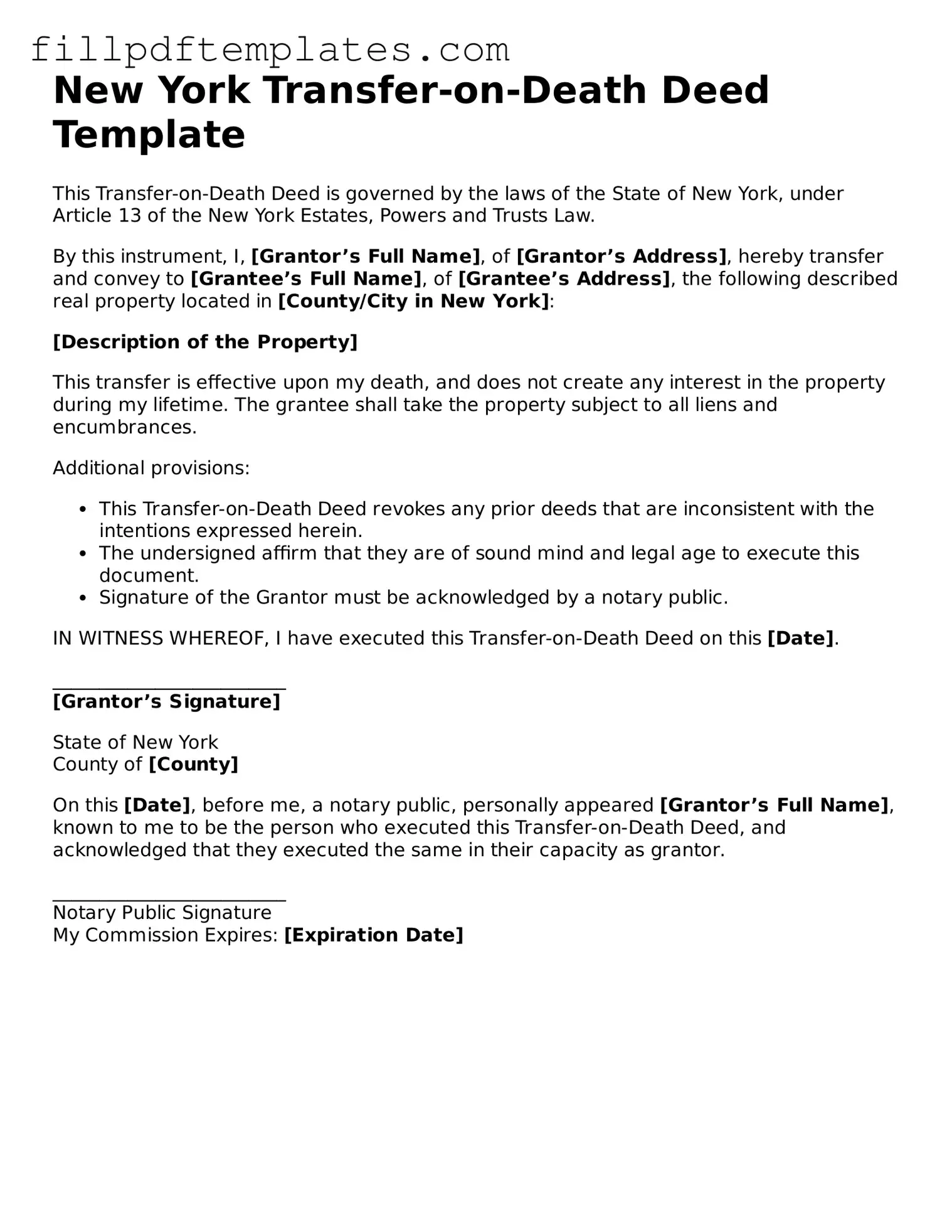New York Transfer-on-Death Deed Template
This Transfer-on-Death Deed is governed by the laws of the State of New York, under Article 13 of the New York Estates, Powers and Trusts Law.
By this instrument, I, [Grantor’s Full Name], of [Grantor’s Address], hereby transfer and convey to [Grantee’s Full Name], of [Grantee’s Address], the following described real property located in [County/City in New York]:
[Description of the Property]
This transfer is effective upon my death, and does not create any interest in the property during my lifetime. The grantee shall take the property subject to all liens and encumbrances.
Additional provisions:
- This Transfer-on-Death Deed revokes any prior deeds that are inconsistent with the intentions expressed herein.
- The undersigned affirm that they are of sound mind and legal age to execute this document.
- Signature of the Grantor must be acknowledged by a notary public.
IN WITNESS WHEREOF, I have executed this Transfer-on-Death Deed on this [Date].
_________________________
[Grantor’s Signature]
State of New York
County of [County]
On this [Date], before me, a notary public, personally appeared [Grantor’s Full Name], known to me to be the person who executed this Transfer-on-Death Deed, and acknowledged that they executed the same in their capacity as grantor.
_________________________
Notary Public Signature
My Commission Expires: [Expiration Date]
